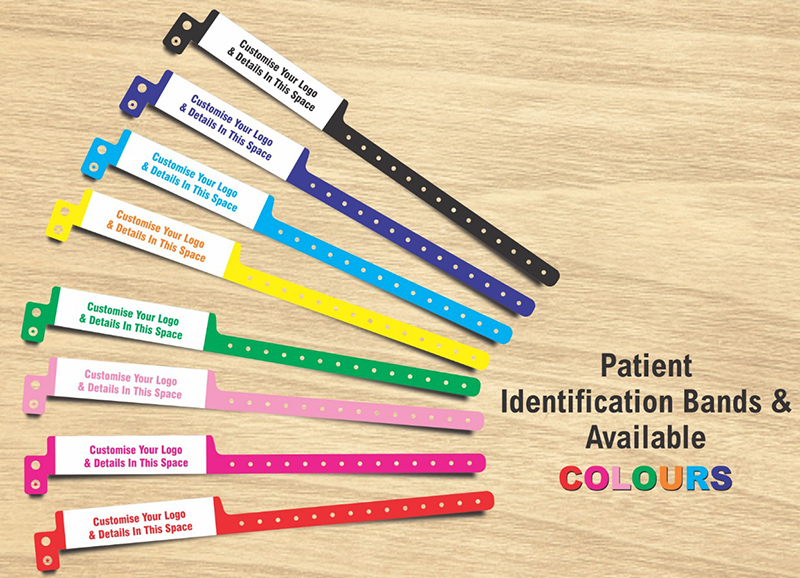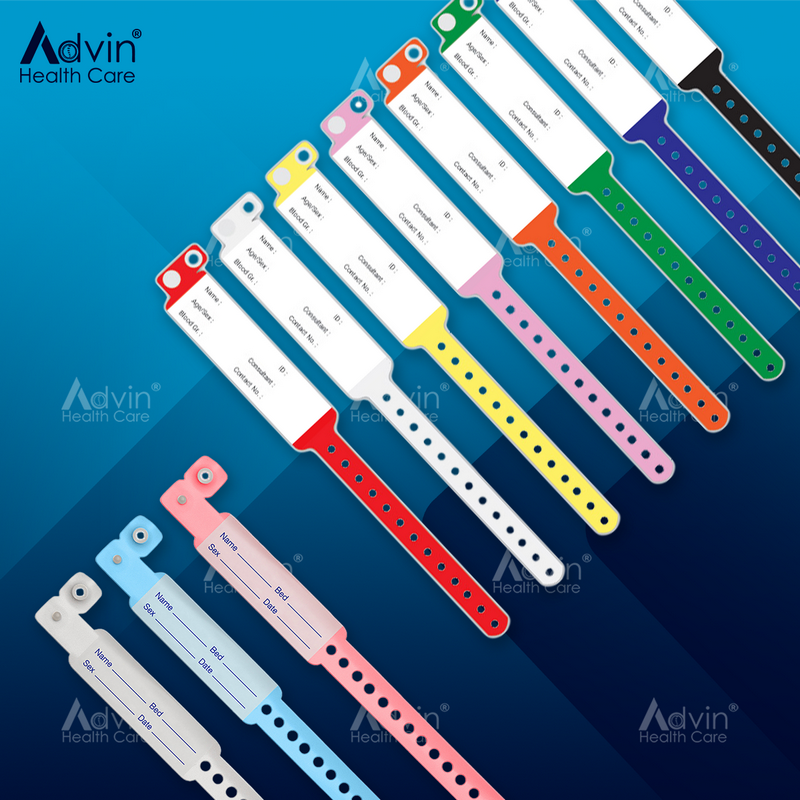Choosing the Right Components for Your Patient Identification Band: A Step-by-Step Guide
Choosing the Right Components for Your Patient Identification Band: A Step-by-Step Guide
Blog Article
Discovering the Different Kinds Of Patient Identification Band Utilized in Medical Facilities
In the complex globe of healthcare, the vital function of Patient Identification bands frequently goes unnoticed. These bands, varying from easy paper wristbands to advanced RFID bands, develop the backbone of Patient safety protocols, guaranteeing precision in Patient Identification. The vast diversity of these bands, each with its distinct benefits and constraints, is commonly overlooked. As we navigate via this topic, one may obtain insight into the subtle complexities and crucial importance of such bands in medical facilities.
Understanding the Value of Patient Identification Bands
While they might appear like mere devices, Patient Identification bands play an important role in clinical facilities. These bands offer as a vital tool for validating Patient identity, preventing medical mistakes associated to misidentification. Patient Identification bands likewise aid in improving management jobs, making certain precise record-keeping and billing.
Typical Paper Wristbands: Their Usage and Limitations
Conventional paper wristbands have actually been a staple in Patient Identification throughout different medical centers. While their use prevails, they harbor particular constraints that might influence their effectiveness in Patient management. This area will focus on the scope of their application and the fundamental disadvantages related to their use.
Paper Wristbands: Usage Scope
In the world of Patient Identification, paper wristbands have long held an important role. These bands are generally utilized in outpatient setups, where the Patient's stay is short-lived. The wristbands have crucial details such as the Patient's name, day of birth, and a special Identification number. This basic, yet effective system, enables physician to quickly and precisely determine individuals, guaranteeing the appropriate therapy is carried out. Paper wristbands are additionally utilized in emergency situation circumstances, where quick Identification is extremely important. Their usage includes occasions like blood donation drives and mass inoculation programs, further highlighting their flexibility. In spite of innovations in technology, the simple paper wristband stays a cost-efficient and trustworthy service for Patient Identification in various medical care situations.
Limitations of Paper Wristbands
In spite of their prevalent use, paper wristbands are not without their disadvantages. Their physical resilience is just one of the substantial restrictions. Exposure to water, sweat, or misuse can provide them unreadable or perhaps cause them to degenerate. In enhancement, paper wristbands typically lack the technological abilities of more modern-day choices, such as barcoding or RFID chips, restricting their performance to just displaying written info. The inability to upgrade or modify the information on the wristband is another imperfection. If the details is handwritten, legibility can be compromised, leading to prospective misidentification. Paper wristbands can trigger pain or skin irritation to some clients, specifically when put on for extended durations.
Barcoded Wristbands: Improvements in Patient Identification
While Patient Identification has actually long been an important element of medical care, the arrival of barcoded wristbands represents a significant leap forward. These bands utilize the simpleness of barcoding innovation, permitting for Patient information to be promptly checked and accessed. They improve the rate and precision of Patient Identification, reducing the threat of clinical mistakes connected to misidentification. Barcoded wristbands are economical, easy to produce, and get rid of handwriting errors common with hands-on systems. Nonetheless, they are not without constraints. While they use improvements over standard bands, the barcode can end up being used or smudged, providing it unreadable. In spite of this, barcoded wristbands stay a necessary device in contemporary healthcare settings, signifying the crossway of technology and Patient treatment.
Radio Frequency Identification (RFID) Bands: an Action In The Direction Of Futuristic Health Care
The evolution of Patient Identification bands has produced the emergence of Superhigh frequency Identification (RFID) Bands (patient identification band). These cutting-edge tools existing key benefits for health care facilities, supplying a much more effective and technically learn this here now progressed ways of Patient Identification. The implementation of RFID in healthcare is a significant step towards a much more futuristic strategy to Patient management and safety and security
Recognizing RFID Bands

RFID Bands: Key Benefits
Primarily, these bands improve Patient safety and security by giving precise, immediate Identification, thereby minimizing clinical mistakes. RFID bands can keep a vast amount of Patient data, consisting of medical history and allergic reactions, allowing individualized care. Generally, RFID bands represent a considerable improvement in Patient Identification technology, profiting both people and medical care suppliers.
Carrying Out RFID in Medical Care
As we tip into a technically advanced era, the execution of RFID bands in medical care becomes increasingly important. These bands give a seamless way to track and recognize individuals, ensuring their safety and security and boosting effectiveness in treatment procedures. RFID bands use many advantages over standard Identification methods. They can store a huge amount of data, consisting of the Patient's clinical background and therapy plans, which can be quickly accessed by healthcare suppliers. This information assists medical professionals make informed choices relating to the Patient's therapy strategy. Moreover, RFID bands minimize clinical errors by supplying precise Patient Identification, which is important in preventing misdiagnosis or incorrect medication management. Hence, the execution of RFID bands is a considerable action in the direction of enhancing Patient security and health care distribution.

Color-Coded Wristbands: Helping in Quick and Accurate Diagnosis
In click here for info the bustling atmosphere of a medical facility, color-coded wristbands have actually arised as essential tools for swift and accurate Identification of a client's clinical condition. These wristbands, put on by clients, bring specific colors that correspond to different clinical problems or standings. This system is designed to use immediate visual signs to health care service providers, improving Patient safety and care quality.
Strategies for Reliable Application and Management of Patient ID Bands
Accomplishing optimum use Patient Identification bands requires a well-structured technique for their implementation and monitoring. The first action includes training all wellness workers on the importance of appropriately applying and checking out these bands. Second of all, health centers need to systematize using ID bands across all departments, ensuring uniformity and minimizing inconsistencies. Routine audits ought to be conducted to confirm adherence to policies and to remedy any inconsistencies. Patient education and learning is also crucial; individuals must recognize the purpose of the bands and the requirement for their constant wear. patient identification band. Finally, it's vital to have a backup plan in position, such as barcode scanning or biometrics, to ensure that Patient Identification is never compromised.
Final thought
Patient Identification bands are crucial in medical facilities to ensure safety and precision. Traditional paper, barcoded, RFID, and color-coded wristbands each hold special advantages, varying from cost-effectiveness to innovative information storage and instantaneous medical informs. Reliable execution site web and administration of these bands can substantially decrease medical mistakes, improve efficiency, and enhance total Patient care. Hence, understanding and using these Identification tools is critical for keeping high standards in medical care.
These bands, differing from straightforward paper wristbands to sophisticated RFID bands, form the foundation of Patient security methods, making sure precision in Patient Identification.The advancement of Patient Identification bands has actually brought concerning the appearance of Radio Regularity Identification (RFID) Bands. Generally, RFID bands stand for a significant development in Patient Identification technology, benefiting both people and medical care suppliers.
RFID bands reduce medical errors by offering accurate Patient Identification, which is critical in avoiding misdiagnosis or incorrect medication administration. Patient education is also important; patients should comprehend the function of the bands and the need for their consistent wear.
Report this page